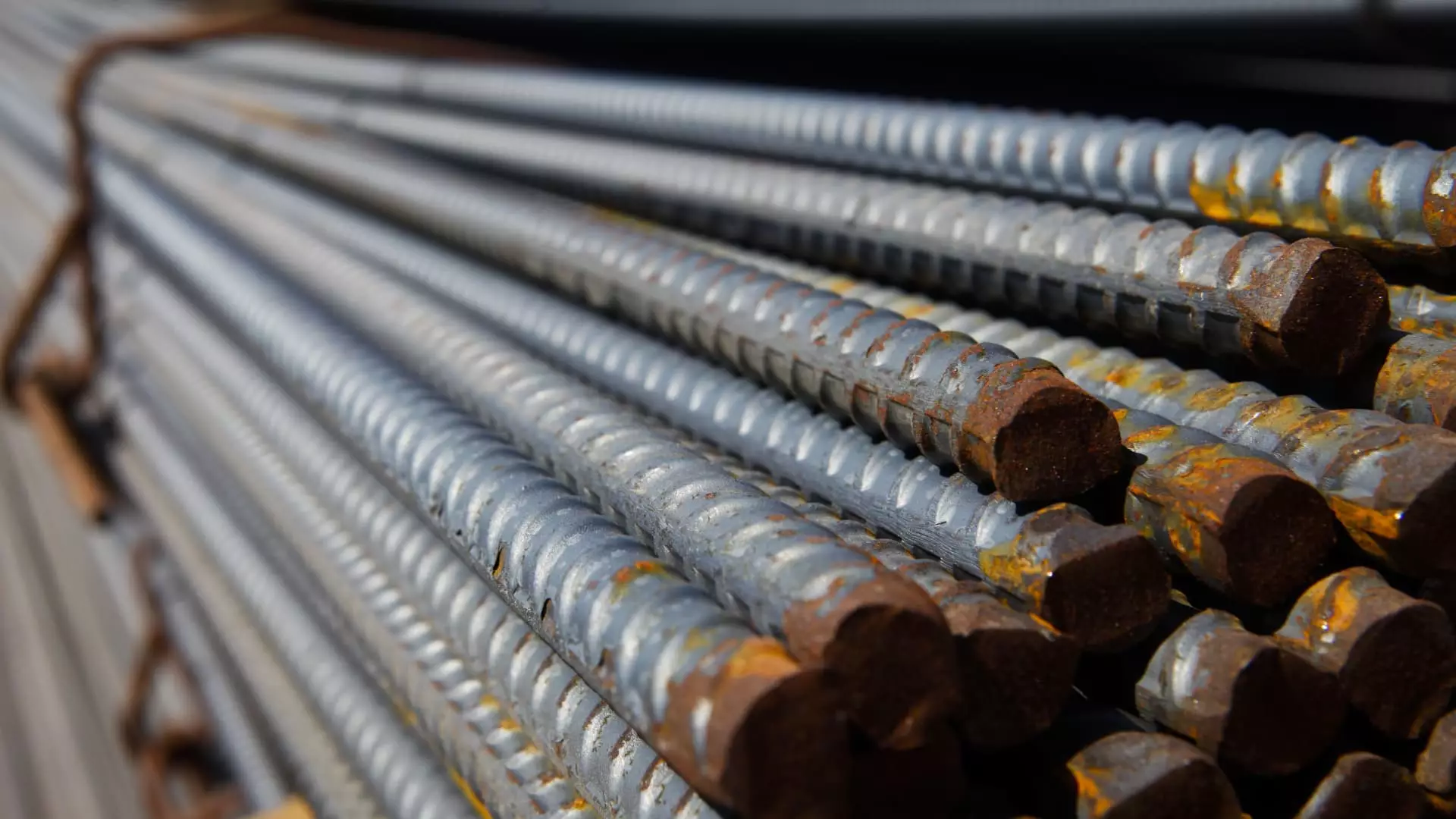President Donald Trump’s recent imposition of tariffs—25% on imports from Mexico and Canada and 10% on Chinese imports—has sent ripples through the U.S. steel industry. There is a prevailing notion that domestic steelmakers stand to gain from these tariffs, as they theoretically make foreign steel pricier. This element of protectionism not only aims to bolster U.S. producers but also seeks to address ongoing challenges from years of cheap steel imports, often facilitated by what industry leaders term “illegal dumping.”
The promise of increased pricing power for domestic steel firms, such as Nucor and U.S. Steel, seemed to momentarily buoy investor sentiment, as evidenced by fluctuations in their stock values. However, as trading reflects, the market reaction is nuanced, with gains in steel stocks waning amidst broader economic uncertainties. The underlying question remains: Will the tariffs indeed create a sustainable advantage for U.S. producers, or will they merely serve as a short-term fix?
When considering the long-term implications of the tariffs, analysts express a mixed outlook. While there seems to be an immediate lift in pricing power due to decreased competition from abroad, the restrictions on foreign steel could lead to limited demand, particularly from key sectors reliant on steel products, such as the automotive industry. A report from Morgan Stanley highlights that although steel prices may recover, there is an expected modest growth in overall demand—projected at just 1.6%. This relatively stagnant demand could stifle any significant long-term benefits for domestic steel producers.
Moreover, as noted by Bank of America Securities, potential future challenges loom large, particularly due to anticipated reductions in auto production, which constitutes approximately 25% of U.S. steel demand. If this projection holds true, the steel sector may find itself grappling with a dual challenge: while prices are elevated by tariffs, actual consumption might not keep pace, thereby limiting profitability and growth for steel makers.
Beyond domestic dynamics, international relationships play a significant role in the steel market’s trajectory. Canada and Mexico, both significant players in the U.S. steel import landscape, were initially at risk of being heavily impacted by tariffs. However, recent negotiations and political maneuvers, including a one-month pause on tariffs in exchange for military support at the border, underscore just how interconnected trade relations are to broader geopolitical concerns.
In this context, the potential acquisition of U.S. Steel by Nippon Steel, a move that was recently thwarted by the Biden administration, illustrates the competitive tensions within the industry not just nationally, but globally. Additionally, partnerships such as the one between Nucor and Cleveland-Cliffs indicate a strategic pivot towards consolidation and collaboration in response to evolving market conditions.
While the market has responded to tariffs with initial optimism, investment analysts urge caution. The fluctuating nature of steel stocks reflects a broader wariness around the actual benefits these tariffs will yield. For instance, U.S. Steel’s stock has recently been downgraded due to diminishing expectations for significant upside potential if the company remains independent—a signal of underlying skepticism regarding the company’s ability to capitalize on the current environment.
UBS analysts also caution that, despite short-term price hikes driven by trade disruptions, the longer-term outlook may be tempered by a combination of low demand and new capacity from domestic producers. The balance between potential price gains due to tariffs and the realities of a constrained market could define the future of the steel industry.
While U.S. steelmakers may experience immediate benefits from recent tariff measures, the interplay between domestic pricing power and international trade dynamics creates a complex landscape. As key industry analysts weigh potential growth against projected demand stagnation, the steel sector finds itself at a crossroads. Identifying and navigating the risks inherent in this evolving scenario will be crucial for sustaining profitability and long-term growth in what has been an historically volatile industry. The stakes are high, and the steelmakers are poised to either harness this moment or face the pitfalls of short-sighted optimism.

